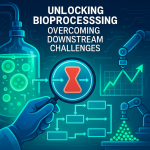Introduction:
Researchers at Queen’s University in Kingston, Ontario, Canada, have developed an alternative method to purify recombinant proteins, which may serve as an alternative to nickel-nitrilotriacetic acid (Ni-NTA) in fast protein liquid chromatography (FPLC) purification. This method uses immobilized polyphosphate (polyP) to bind to histidine-tagged proteins, offering a convenient and economic option for protein purification without the need for additional cloning.
- Ni-NTA purification often faces challenges such as nonspecific binding of contaminants and unpredictable binding with polyhistidine tags on different proteins. However, the use of polyP offers a highly specific purification method.
- The research conducted by the team at Queen’s University involved immobilizing polyP in an amine-activated agarose matrix. They tested the binding power of the polyP-coupled resin using histidine-tagged proteins MafB and Snf1 and found that binding occurred within a pH range of 5.5 to 7.5, with the highest binding at pH 6.5.
- PolyP purification showed higher purities compared to FPLC size exclusion chromatography (SEC) using Ni-NTA, with average purities of 86.8% and 73.1%, respectively. However, the average recovery yield was higher using SEC (84.2%) than with polyP (75.5%).
- PolyP resin purification can serve as a complementary method to Ni-NTA, especially for samples that require higher purity such as monoclonal antibodies. The major limitation is the resin’s stability after repeated use, which could potentially be improved with a better matrix.
Conclusion:
The development of an alternative purification method using polyP resin provides a convenient and economic option for fast protein liquid chromatography (FPLC) purification. This method offers highly specific purification without the need for additional constructs or purification tags. While there are limitations to the stability of the polyP resin, further improvements in the matrix could enhance its potential as a complementary method for post-Ni-NTA protein purification.



